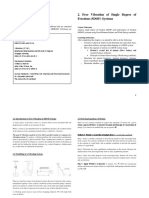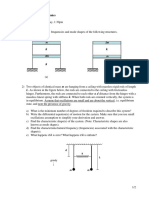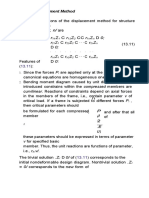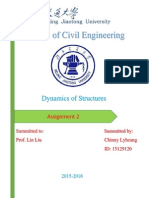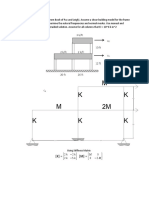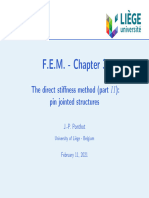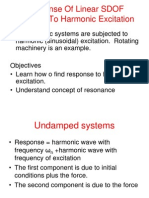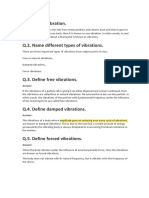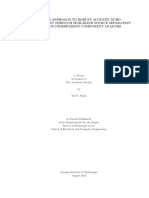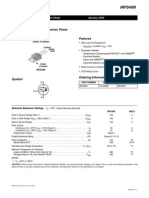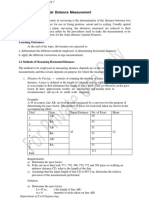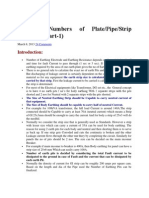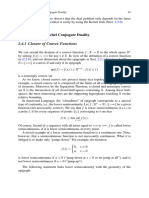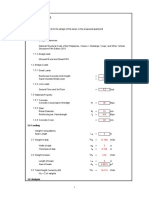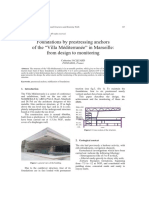0% found this document useful (0 votes)
215 views10 pagesDynamics
The document contains solutions to multiple problems involving determining equations of motion for mechanical systems using d'Alembert's principle. Problem 2.1 involves a cantilever beam supporting a mass and calculates the natural frequency. Problem 2.2 involves a simply supported beam with a mass and also calculates the natural frequency. Problem 2.4 involves a structural frame and calculates the natural frequency. Problem 2.6 involves a rigid rod with rotational motion and external forces and derives its equation of motion.
Uploaded by
Paul AndersCopyright
© © All Rights Reserved
We take content rights seriously. If you suspect this is your content, claim it here.
Available Formats
Download as PDF, TXT or read online on Scribd
0% found this document useful (0 votes)
215 views10 pagesDynamics
The document contains solutions to multiple problems involving determining equations of motion for mechanical systems using d'Alembert's principle. Problem 2.1 involves a cantilever beam supporting a mass and calculates the natural frequency. Problem 2.2 involves a simply supported beam with a mass and also calculates the natural frequency. Problem 2.4 involves a structural frame and calculates the natural frequency. Problem 2.6 involves a rigid rod with rotational motion and external forces and derives its equation of motion.
Uploaded by
Paul AndersCopyright
© © All Rights Reserved
We take content rights seriously. If you suspect this is your content, claim it here.
Available Formats
Download as PDF, TXT or read online on Scribd
/ 10

